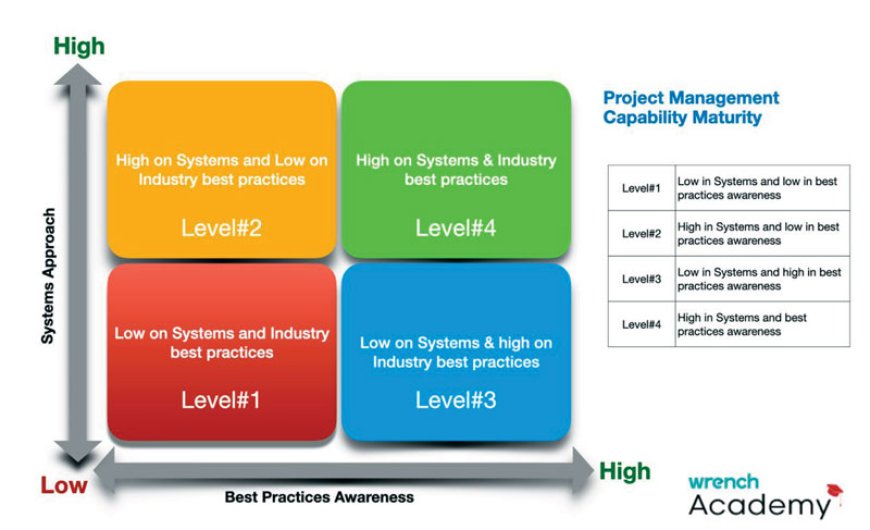Bridging the gap between knowledge and practice in EPC projects

Globally, less than 10% of EPC projects finish on schedule, on budget, with quality, and with sufficient profit for all stakeholders. Why is this? What ails the industry?
The answer is simple - lack of standardisation.
Is that an oversimplification?
No.
If you adjust for variables like manpower, material and equipment shortages, the one constant that emerges is insufficient and inconsistent standardisation (i.e. Best Practices) in project cycles.
What I’m saying is not new. Most organisations readily acknowledge the need for best practices. But they don't know what to do about it - and that is the bottleneck behind most project delivery failures. There's a yawning gap between theoretical knowledge of best practices and ability to apply them in real life. So, the best practice stays in the classroom (or the boardroom) and rarely makes it to the site.
Why?
Well, think about what the project lifecycle actually is: a collection of processes interlinked with other processes inside one large meta process, let's call it the Engineering Procurement and Construction process, and most is manually driven and manually managed. Where would you even begin to apply a Best Practice? How would you control it? Enforce it? The very prospect is daunting.
Another factor: in an industry so diverse, you find widely differing levels of maturity when it comes to best practices. Some organisations are unaware of (or unwilling to acknowledge) the need while others are aware but unable to implement them, and a few are both aware and active, i.e. they have tried to implement them but without noticeable success. So, the problem remains and even gets compounded with each successive project cycle because the lack of standardisation places even more pressure on already-strained manpower resources.

As a technology solutions provider with over 25 years working with process-driven organisations, I set out to understand the problem. There were some caveats; I had to think like an engineer rather than a businessman or a technologist, and I had to get into the skin of an EPC organisation with all its nuances and interdependencies and inconsistencies. Eventually, my team and I were able to adapt our knowledge of manufacturing best practices to the construction context, and we developed a 'Best Practices Maturity Level' rating system for EPC organisations, based on two factors: awareness of best practices and ability to implement those practices in real life. I think of them as skill and system - knowing what to do, and having a system set up which allows you to do it.
Here's how it works.
Level 1, the lowest rating, is low skill, low system, which means the organisation essentially relies on the personal brilliance of a few people to get things done. The approach to project management is reactive and ad-hoc, with no reuse of knowledge, little predicability or scalability, and almost no awareness of (or ability to) use tools like AI that could help it learn from past projects instead of solving the same problems over and over.
A Level 2, the organisation is slightly better off - low skill but some system. Such an organisation has taken a first step into standardising and optimising its systems by investing (mildly) into generic IT tools, say a file management system or an EDMS, but has not yet prioritised best practices. So, on top of all the other Level-1 problems, it struggles to derive value from its piecemeal software, plus it has to spend precious manpower in managing all the multiple generic applications.
At level 3, we begin to see a real shift, high skill, low system. Level-3 organisations understand the value of industry best practices and are trying to implement them and may even know how modern technology like AI can leverage historical data, but their efforts are not very successful because trying to implement without changing the base process (i.e. via manual effort alone) is almost certainly doomed to failure. But they are on the right path and if they continue down it, real change is just a matter of time.
Level 4 is the utopian ideal - high skill and system. This EPC organisation is well versed in best practices and has created the system required to enforce those best practices at the organisational level. It knows about the power of automation when applied at the enterprise level and it knows to offer in-depth systems training to new hires right off the bat as a matter of course, and has therefore managed to create a culture of sustainable and continuous improvement where new technologies like AI are successfully exploited to extract value from the organisation’s past data.
If I had to sum up my learnings when it comes to Best Practices in EPC, it would be this: first understand the starting point, i.e. the best practices maturity level but don't try to do it on your own, you need the combination of technology, process, and culture to accurately assess the start point. Once you know where you are, define where you want to reach. Work with an EPC-savvy consultant or technology provider to design a plan that will take you to your goal in the shortest possible time. And - still speaking as an engineer - make sure the plan is practical, controllable, and measurable. Which brings me to automation, the only way to successfully enforce processes across an organisation, including best practices. But automation is not merely a matter of digitising a manual process, there is a lot more to it, so work with the right people to set the right goals and devise the right plan.
My plea to the industry is to spend time understanding the problem before you go shopping for solutions. Also, invest in the best solution for your vertical and your specific organisation instead of settling for generic out-of-the-box solutions. Then we might see fewer missed deadlines, less conflict and litigation, higher quality, and more profit per project.

Varghese Daniel
Co-founder and CEO, Wrench Solutions







